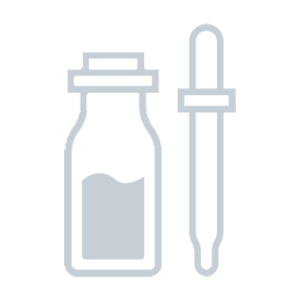Comparison between It Cosmetics CC Cream Oil- Free Matte SPF 40 vs. Bare Minerals Complexion Rescue Tinted Moisturizer With Hyaluronic Acid And Mineral SPF 30
- 75 components -
- 31 components -
Find out which product is better for your skin.
Ingredients in both products 8
Components only in It Cosmetics CC Cream Oil- Free Matte SPF 40 67
Zinc Oxide, Dimethicone, Butylene Glycol Dicaprylate/Dicaprate, Cyclopentasiloxane, Dimethicone/Vinyl Dimethicone Crosspolymer and 62 more. Show all.
Uniqueness: 89.3%
Components only in Bare Minerals Complexion Rescue Tinted Moisturizer With Hyaluronic Acid And Mineral SPF 30 24
Uniqueness: 77.4%
Face to Face
Components position by position
1
Titanium Dioxide
1
Water
2
Zinc Oxide
2
Coconut Alkanes
3
Water
3
Propanediol
4
Dimethicone
4
Squalane
5
Butylene Glycol Dicaprylate/Dicaprate
5
Trehalose
6
Butylene Glycol
6
Isostearic Acid
7
Cyclopentasiloxane
7
Glycerin
8
Dimethicone/Vinyl Dimethicone Crosspolymer
8
Silica
Show others
Positive Effects
Find out what good effects the product has
Both products provide the following effects: , UV Protection, Moisturizing, Cleansing, Softening, Soothing, Anti-aging, Rejuvenation, Antifungal, Antiseptic, Protection, Hair conditioning, Hair structure improvement, Hair gloss, Hair protection
Effects unique for CC Cream Oil- Free Matte SPF 40:
Antioxidant, Acne fighting, Pore Shrinking, Lightening, Lifting, Elasticity improvement, Nutrifying, Deodorant, Anticellulite, Antiviral, Tones up skin, Regeneration, Anti dandruff, Hair strengthening, Hair growth stimulating, Hair follicle nutritionEffects unique for Complexion Rescue Tinted Moisturizer With Hyaluronic Acid And Mineral SPF 30:
No unique effects found
-- Show more --
ECO Metrics
Find out how eco-friendly the components are
Vegan
No
No
Cruelty free
No
No
Reef safe
Yes
Yes
Ozone layer safe
Yes
Yes
Organic score
natural
28 out of 75
37%
chemical
40 out of 75
53%
natural
8 out of 31
26%
chemical
18 out of 31
58%
Concerns
Pay attention to this information
-- Extra information --
Components by Skin Type
Find out what components are good or bad for your skin type
Dry skin
Positive: 5Negative: 0
Butylene Glycol#6Glycerin#32Anthemis Nobilis Flower Water#371,2-Hexanediol#41Vitis Vinifera (Grape) Seed Extract#42
Oily skin
Positive: 2Negative: 1
Zinc Oxide#2Camellia Sinensis (Green Tea) Leaf Extract#43Stearic Acid#15
Sensitive skin
Positive: 5Negative: 1
Titanium Dioxide#1Zinc Oxide#2Anthemis Nobilis Flower Water#37Aloe Barbadensis (Aloe Vera) Leaf Extract#52Titanium Dioxide#75Citric Acid#54
Dry skin
Positive: 3Negative: 0
Glycerin#7Butylene Glycol#15Sodium Hyaluronate#17
Oily skin
Positive: 0Negative: 2
Coconut Alkanes#2Potassium Chloride#26
Sensitive skin
Positive: 1Negative: 0
Titanium Dioxide#30

